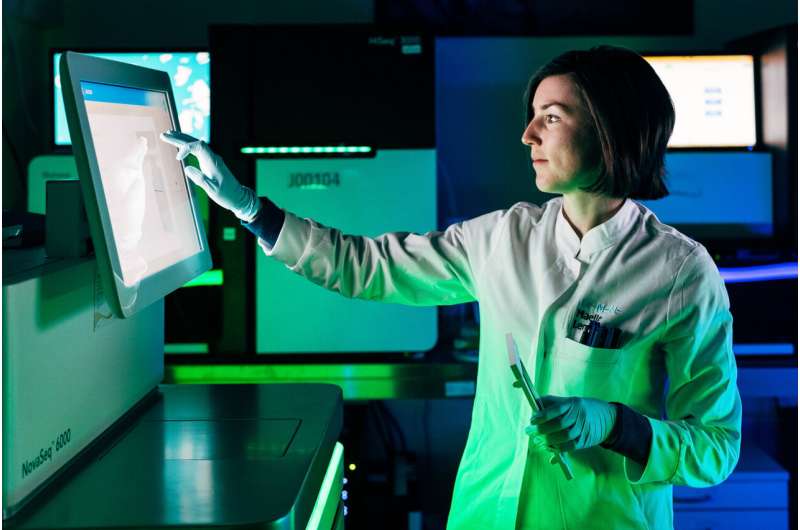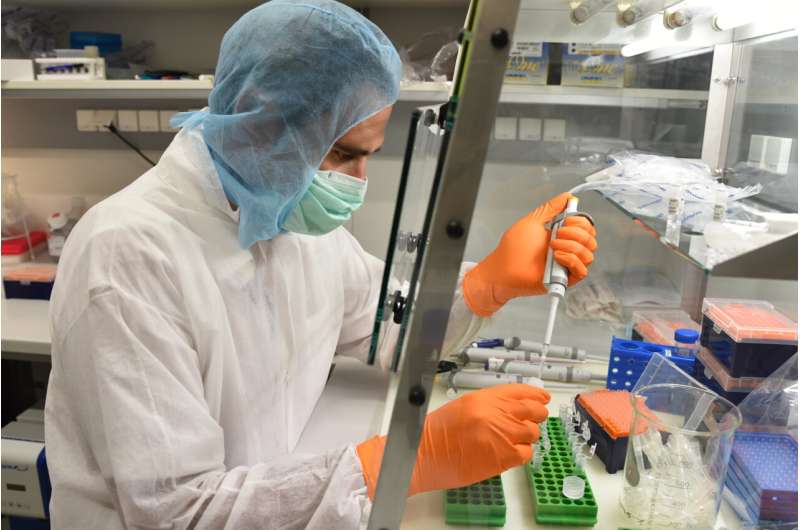by CeMM Research Center for Molecular Medicine of the Austrian Academy of Sciences

When pathogens invade the body, the immune system must react immediately to prevent or contain an infection. But how do our defense cells stay ready when no attacker is in sight?
Scientists from Vienna have found a surprising explanation: They are constantly stimulated by healthy tissue. This keeps them active and ready to respond to pathogens. Based on this insight, future medications could be devised to selectively enhance our immune system’s attention. The study has been published in the journal Nature Immunology.
Communication is crucial in immune defense. When a virus infects a cell, the cell releases signaling molecules. This alerts immune cells, and our immune system is rapidly activated. Immune cells process such signals through the JAK-STAT signaling pathway—named after Janus, the two-faced Roman god of beginnings and endings.
This pathway links signal detection on the cell surface to the core regulatory machinery of immune cells, activating a set of genes and putting the immune cells into attack mode.
Even when there is no immediate threat, our immune cells must remain vigilant. At the same time, they should not cause damage through unnecessary activity, as it is the case with autoimmune diseases. How our defense cells maintain this balance is poorly understood. A team of research groups from Vienna has now put forward an explanation in the journal Nature Immunology.
“The same JAK-STAT signaling pathway that activates immune cells during an infection also keeps them on standby when no pathogens are in sight,” explains Christoph Bock, Principal Investigator at CeMM and Professor at the Medical University of Vienna. When encountering a pathogen, the immune cells thus only need to increase the signaling intensity, which is much faster than turning on a completely new signaling pathway.

To reach this conclusion, the team examined 12 mutant mouse models, each with a genetically altered component of the JAK-STAT signaling pathway. These mice were raised free of diseases and compared with genetically unaltered mice.
It was observed that the mutant mice lacked some of the characteristic gene activity and epigenetic regulation of the standby state. Something similar happened when defense cells were removed from their tissue environment and kept in cell culture: They lost their characteristic standby state and even parts of their identity as immune cells.
The team analyzed the gene expression and epigenetics of immune cells and tissue samples collected by seven research teams from Vienna. “Our analyses were only possible due to the establishment of uniform laboratory standards and robust statistical methods,” explains bioinformatician Nikolaus Fortelny (first author and now Professor at the University of Salzburg).
“We showed that JAK-STAT signaling has different functions when immune cells are on standby than during the active response to pathogens,” explains Matthias Farlik (also a first author and now group leader at the Medical University of Vienna).
“JAK-STAT signaling is a central mechanism of our body for communicating immune signals,” says Thomas Decker (Professor at the Max Perutz Labs and the University of Vienna) the relevance of the study.
“Our study provides insights into the role of the immune system: not only does it react to attacks, but it also maintains vigilance without causing unnecessary damage,” adds Mathias Müller (Professor at the University of Veterinary Medicine Vienna).
Genes of the JAK-STAT signaling pathway are sometimes pathologically altered in individuals with immune diseases and cancer. Therefore, this research also provides possible approaches for future therapies.
More information:
JAK-STAT signaling maintains homeostasis in T cells and macrophages, Nature Immunology (2024). DOI: 10.1038/s41590-024-01804-1
Provided by
CeMM Research Center for Molecular Medicine of the Austrian Academy of Sciences
Citation:
Immune cells on standby are constantly stimulated by healthy tissue, new study finds (2024, April 24)
immune-cells-standby-constantly-healthy.html
.
. The content is provided for information purposes only.
